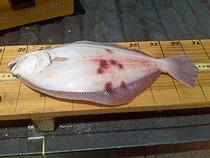Fukushima -- Alien Agenda: Canada’s archons cover-up Pacific Fish contamination
Are the archons that have been originally described by the ancient Pagan Gnostics, currently responsible for an apparent pattern of deception associated with Fukushima? Are statements made in Canada on Fukushima, consistent with archon influence or control? Is the apparent continued deception associated with Fukushima consistent with the documented deception of archons? Are strategically placed off-world interdimensional alien entities, through their archons on Earth, frustrating the ability of we, as humans, to monitor the spread of the Fukushima. The ancient Pagan Gnostics described the archons on Earth as the “humanized face of aliens” which operate through elite-driven institutions. The Canadian Food Inspection Agency, which monitors food safety, says it is aware of radiation concerns over fish in the Pacific, but further says the amounts of cesium detected are “small“. Are they lying, and “small” compared to what? Dr. Dale Dewar, a family physician in Wynyard, Sask., doesn’t eat a lot of seafood herself. But, when her grandchildren come to visit, she carefully checks seafood labels. She wants to make sure she isn’t serving them anything that might come from the western Pacific Ocean. Dewar, the executive director of Physicians for Global Survival, a Canadian anti-nuclear group, says the Canadian government has downplayed the radiation risks from Fukushima and is doing little to monitor them. “We suspect we’re going to see more cancers, decreased foetal viability, decreased fertility, increased metabolic defects – and we expect them to be generational,” she said. And evidence has emerged that the impacts of the disaster on the Pacific Ocean are worse than expected. Since a tsunami and earthquake destroyed the Fukushima Daiichi Nuclear Power Plant last March, radioactive cesium has consistently been found in 60 to 80 per cent of Japanese fishing catches each month tested by Japan’s Fisheries Agency. Contamination of fish in the Pacific Ocean could have wide-ranging consequences for millions. The Pacific is home to the world’s largest fishery, which is in turn the main source of protein for about one billion people in Asia alone. In October, a U.S. study – co-authored by oceanographer Ken Buesseler, a senior scientist at the non-profit Woods Hole Oceanographic Institution in Woods Hole, Mass., – reported Fukushima caused history’s biggest-ever release of radiation into the ocean – 10 to 100 times more than the 1986 Chernobyl nuclear catastrophe. “It’s completely untrue to say this level of radiation is safe or harmless,” said Gordon Edwards, president of the Canadian Coalition for Nuclear Responsibility. Edwards, who is also a math professor at Vanier College, said Fukushima has highlighted how lackadaisical Canadian authorities are about radiation risks – the result, he says, of the influence of Canada’s powerful nuclear industry. “The reassurances have been completely irresponsible. To say there are no health concerns flies in the face of all scientific evidence,” said Edwards, who has advised the federal auditor-general’s office and Ontario government on nuclear-power issues. Other Fukushima impacts have been unexpected, too. The first debris swept into the sea by the tsunami reportedly started to wash ashore on the west coast in mid-December, a year earlier than scientists and authorities predicted. Residents of Vancouver Island, Alaska and the U.S. Pacific coast have said they’ve found large quantities of bottles, cans, lumber and floats. The debris is part of 18 million tonnes of debris from Japan floating across the Pacific – taking up an area thought to be twice the size of Texas. The impact of the debris on the Pacific is unclear. Much of it is expected to eventually join an already massive patch of existing garbage floating in the Pacific gyre. The arrival of the debris on the west coast also appears to have caught Canadian authorities off guard. “What debris are you talking about?” Health Canada spokesman Gary Holub asked when contacted for a comment this week. “Debris from Japan is not expected on the west coast of Canada for another year.” He asked a reporter to email him media stories about the debris. Later, Holub emailed a statement saying “there has been no official confirmation that the source of this debris is from the tsunami in Japan.” He said, “It is ‘highly unlikely’ the debris will be radioactive and that Health Canada will await scientific data before deciding whether to test any of it.” It’s also unclear how the debris will impact fish in the Pacific. But there is a good chance Canadians have already eaten some of the types of fish most likely to be contaminated with cesium, based on the Japanese fisheries data. Japan exported $76 million of food products to Canada in 2010, including $13 million of fish and crustaceans. No figures were available for 2011. The Montreal Gazette analyzed the Japanese fisheries data for 22 seafood species that Japan has exported to Canada in recent years. Some cesium was found in 16 of these 22 species in November, the last full month for which data was available. Cesium was especially prevalent in certain of the species: -- 73 per cent of mackerel tested -- 91 per cent of the halibut -- 92 per cent of the sardines -- 93 per cent of the tuna and eel -- 94 per cent of the cod and anchovies -- 100 per cent of the carp, seaweed, shark and monkfish Some of the fish were caught in Japanese coastal waters. Other catches were made hundreds of kilometres away in the open ocean. There, the fish can also be caught by fishers from dozens of other nations that ply the waters of the Pacific. Yet, Japan is the only country that appears to be systematically testing fish for radiation and publicly reporting the results. CFIA is no longer doing any testing of its own. It did some radiation tests on food imports from areas of Japan around the stricken nuclear plant in the weeks after the Fukushima accident. Whose interests does it serve to not monitor the continuing spread of Fukushima’s radiation across Canada and on our planet? Internet site reference: http://www.montrealgazette.com.
Comments
There are 0 comments on this post















